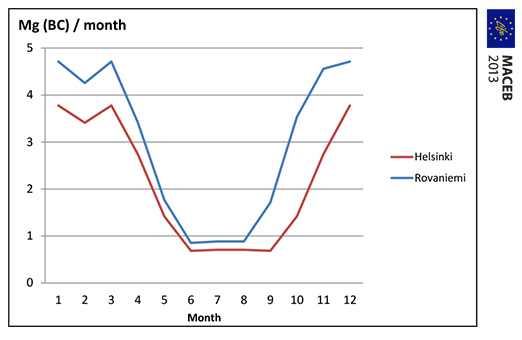

Temporal distribution
Some activities that emit black carbon and other pollutants have a seasonal cycle, related to the need the activity is serving. Examples of such are space heating in residential buildings, which is related to changes in outside temperature and burning of agricultural residues that is done in some regions in connection with the harvesting cycle of certain crops. The seasonality of activities means that more emissions are discharged during periods of increased activity. It is important to take the temporal patterns into account because black carbon effects on snow and ice take place primarily in winter time and because transport of emissions in the atmosphere is different in different seasons.
In the MACEB project the monthly variation in residential heating, energy production and agricultural waste burning was incorporated in the GAINS model by developing monthly emission partitioning factors. For the residential sector monthly emission partitioning factors were developed for different geographical areas taking into account global gridded temperature fields and assumptions on temperature dependent heating and cooking stove use.
The figure below presents, as an example, monthly black carbon emissions from the residential sector in Helsinki and Rovaniemi in 2005.


